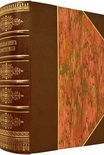The Coldest Case by Martin Walker (mobi reader android txt) 📕

Read free book «The Coldest Case by Martin Walker (mobi reader android txt) 📕» - read online or download for free at americanlibrarybooks.com
- Author: Martin Walker
Read book online «The Coldest Case by Martin Walker (mobi reader android txt) 📕». Author - Martin Walker
The reconstruction of this woman’s face had delighted Bruno since he had first seen it at Cap Blanc, not only because she was lovely in a strikingly modern way with huge eyes, a graceful neck and high cheekbones, but because of the skull cap of shells that she wore. It made her look like some café society beauty of the 1920s. Bruno could almost imagine her dancing the Charleston.
‘What do you think of the exhibition, Bruno? You’ve been studying it long enough.’ The speaker was Clothilde Daumier, a short, red-haired powerhouse of a woman who was one of the museum’s curators and a leading expert on the prehistory of the region. She and her German archaeologist husband, Horst Morgenstern, were good friends and Bruno had been one of the witnesses at their recent wedding. As she spoke, she came forward and they embraced.
‘It’s wonderful,’ Bruno replied. ‘Thank you for inviting me to this preview. I’m overwhelmed with the skill of these reconstructions.’
‘In that case, you can tell the artist yourself,’ Clothilde said, steering him towards an attractive, grey-haired woman who moved gracefully as she advanced to shake Bruno’s hand. ‘Elisabeth Daynès, meet Bruno Courrèges, our chief of police and a good friend who has a great interest in archaeology. He even found a modern corpse in one of our ancient graves.’
‘Clothilde’s archaeologists found it,’ Bruno said, smiling. ‘I just helped find out who it was. But please, let me tell you how moved I am by your work, bringing these people back to life in this way. You are a great artist, madame.’
‘You’re very kind, Monsieur Bruno,’ Elisabeth replied. Her voice was soft and well-modulated, with just a hint of an accent of the Midi. ‘I always enjoy meeting Clothilde’s friends. How did you realize the body you found was not some prehistoric skeleton?’
‘Because he was wearing a Swatch. And Clothilde informed me that they had only been made since 1983. Tell me, have you ever worked with the police in trying to reconstruct the faces of unidentified skeletons?’
‘A little, but only informally. It’s a considerable investment in time and effort to do such a reconstruction and since so much of our work is seen by the courts as inspired guesswork, the police are understandably reluctant to finance such projects.’
‘I find it hard to understand why the courts are so reluctant when I see your work here, madame,’ Bruno said.
‘Please, call me Elisabeth,’ she said, as Clothilde steered them towards a reception area where they were handed glasses of wine and Clothilde excused herself to welcome some other guests to the preview. ‘I understand the courts’ point of view. If you study the verbal descriptions that people give of strangers, they usually describe the hair, its style and colour, the colour of the eyes, and whether the face is fleshy or lean. But those are three elements that we cannot discern from the skull itself. What we can do is use the contours of the individual skull, which vary much more than you might think, to reconstruct each of the forty-three muscles in the human face. So in terms of form and structure, I think we can go a long way to reconstruct the features. But the hair, the eyes, the depth of flesh – that’s almost impossible.’
‘So the muscular structure of a face varies with the small differences in the shape of each individual skull?’
‘Exactly,’ she said, nodding with enthusiasm. ‘We use a laser measurement system to map the precise shape of each skull down to fractions of a millimetre and put that into a computer which creates a three-dimensional model. Then we use a high-precision 3D printer to give us the head. After that we use the laser again to compare this printed skull with a cast we make of the original skull to check that they are absolutely identical. Developing and perfecting that system took a year of work but now it’s almost automatic.’
‘Why bother with the computer-printed version when you have a cast of the original skull?’
‘Because we can do so much of the work on recreating the musculature on the computer where it’s easy to make adjustments,’ she replied. ‘And with the computer, we can share images of our progress with colleagues all over the world. When we reconstructed the face of Tutankhamun, we could stay in constant touch with the National Geographic people in Washington and the Cairo museum.’
‘And if you knew the hair colour and that the body was that of a young man in his twenties, athletic and probably without much body fat, could you reconstruct something fairly accurate?’
‘Absolutely, Monsieur Bruno. Should I assume that you have a particular skeleton in mind and that you’re hoping to enlist my help? I’m afraid my schedule is already impossibly full – perhaps Clothilde has told you of our project to recreate the entire family of hominids from the earliest times: Australopithecus, Homos habilis, ergaster, floresiensis and of course, Neanderthals and Homo sapiens. That takes all my time.’
‘I understand. But perhaps you have some young associate or student with such skills?’
‘Most of what I learned in this area came from Jean-Noel Vignal, whom I met when he was at the Forensic Institute in Paris. Perhaps you might consult him. But tell me about this body.’
Briefly, Bruno recounted the story of J-J and Oscar, and she suddenly interrupted him.
‘But those dates, you say 1988 or 1989, that is when I was here in the Périgord,’ she





Comments (0)